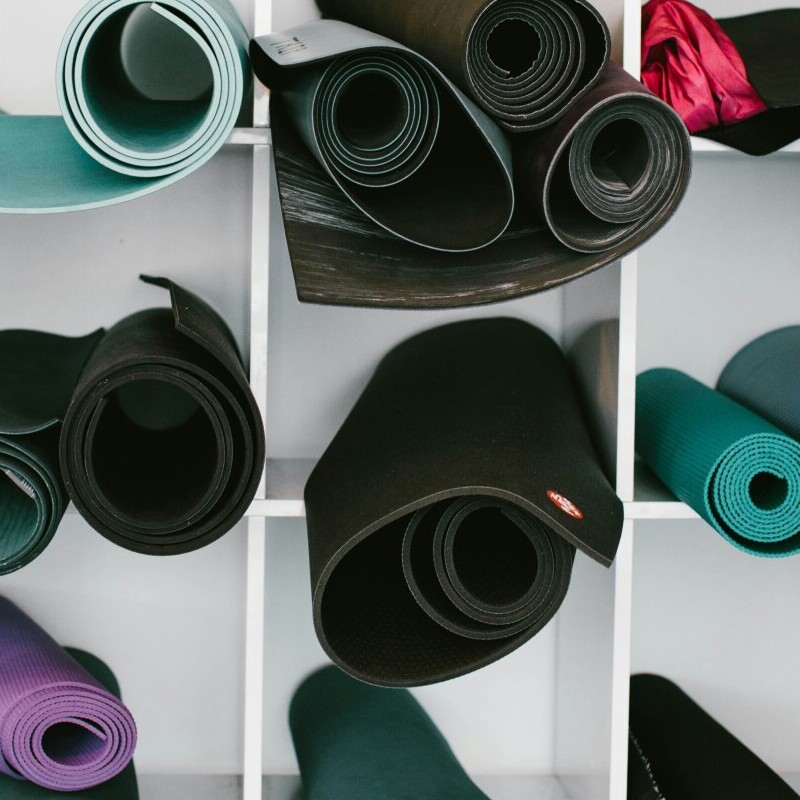
In the world of yoga, the shift towards eco-friendly gear isn’t just a trend—it’s a lifestyle transformation that’s here to stay. As more folks become aware of the environmental impact of their choices, the yoga community is leading the charge towards greener practices. And hey, why shouldn’t our mats reflect the peace and balance we seek?
Sustainability in yoga equipment isn’t just kind to the planet; it’s about making a conscientious choice that aligns with the ideals of many yogis. Opting for eco-friendly mats helps reduce the carbon footprint and supports brands that prioritize earth-friendly production techniques. Those synthetic options packed with PVC and harmful chemicals just don’t cut it anymore when we care about the world we live in.
Traditional yoga mats have been found to have hefty environmental impacts, mostly due to their production and disposal processes. They tend to be made from non-renewable materials and can take forever to decompose in landfills. Swapping these out for eco-conscious alternatives means taking a stand against pollution and waste—one pose at a time!
Joining this green movement transforms your yoga journey into something deeper. It’s exciting to be part of this big-picture awareness, knowing that every breath taken and every pose held is in tune with protecting the earth. So, next time you roll out your mat, think about what those few millimeters of cushioning are made of and how they impact our planet.
Materials Matter: Choosing the Right Eco-Friendly Yoga Mat
When it comes to picking an eco-friendly yoga mat, materials really make a difference. With so many green options out there, understanding the choices can help you find the perfect mat for your practice.
Cork and natural rubber often top the list for sustainable mats. They’re not only eco-friendly but also provide excellent grip, which is super important when you’re sweating it out in downward dog. Cork is also naturally antimicrobial—keeping those funky smells away. Meanwhile, natural rubber, sourced from rubber trees, is biodegradable, making it a planet-friendly option.
Then there’s TPE, or Thermoplastic Elastomers, which is touted as a safer alternative to PVC. While still synthetic, TPE is much more recyclable and has fewer harmful effects on the environment. It’s a great choice for those looking for a balance between sustainability and affordability.
Don’t forget about those certifications and eco-labels, too. Look for mats with credentials like OEKO-TEX or FSC certifications. These certifications ensure that the products meet high environmental and safety standards, giving you some peace of mind that your mat is truly green.
While the initial cost of these mats might seem steep compared to traditional ones, investing in naturally sourced materials often pays off. Not only do they tend to last longer, but they also come with the added benefit of knowing you’re making a positive environmental impact.
Benefits of Using Eco-Friendly Mats at Home
Switching to an eco-friendly yoga mat isn’t just about saving the planet—it’s also about enhancing your own space. At home, where the air quality and environment affect your well-being every day, having a mat made from non-toxic materials is a game changer.
Breathing easy on a biodegradable mat that doesn’t emit harmful chemicals is a major plus for home practice. It’s nice knowing that engaging in pranayama or meditation doesn’t come at the cost of inhaling toxins.
Eco-friendly mats contribute to a cleaner, healthier home environment. They’re less likely to harbor dust or allergens, thanks to materials like cork and natural rubber with their antimicrobial properties. Less cleaning hassle is always a win!
A commitment to sustainable living doesn’t stop at recycling and energy conservation; it includes the everyday products we use. Choosing a sustainable mat reflects that conscientious lifestyle, proving that yoga practice aligns with the broader values of health and environmental respect.
Consider this a long-term investment not just for the planet, but for a fuller, richer yoga experience at home. Whether it’s savasana or sun salutations, standing on something sustainable feels great.
Top Eco-Friendly Brands and Mats on the Market
Looking for the best eco-friendly yoga mats? There are lots of great brands that are making waves in the sustainable mat scene, balancing eco-credentials with quality and design.
One of the leaders in this field is Manduka, known for their PRO series mats, but they also have a sustainable line crafted from natural rubber. Their mats offer durability and comfort, making them popular amongst yogis who need a long-lasting mat.
Jade Yoga is another favorite, celebrated for using natural rubber tapped from rubber trees, which means no PVC or ozone-depleting substances. These mats also give back to the environment, with trees planted for every mat sold.
Then there’s Liforme, offering mats with unique alignment markers to guide your practice. Made from biodegradable natural rubber, they’re just as kind to the earth as they are to your yoga technique. And the added body alignment guide is a bonus for those keen on precision.
For those on a tighter budget, Gaiam offers accessible mats that still deliver on eco-friendly promises. Their reversible mats are made from TPE and completely latex-free, offering a balance between affordability and sustainability.
Ultimately, when choosing a brand, think about your yoga practice needs and budget. Reviews and user feedback can also guide you to find a mat that fits your personal and environmental ethics.
Caring for Your Eco-Friendly Yoga Mat
Once you’ve got your hands on the perfect eco-friendly yoga mat, keeping it in top condition is a breeze with the right care. Regular cleaning helps maintain its grip and extends its lifespan, ensuring you get the most out of your investment.
For mats made of natural rubber or cork, a wipe down with a mixture of water and a few drops of mild essential oil, like tea tree or lavender, works wonders. Just spray it lightly and wipe with a clean cloth to keep it fresh and clean without damaging the natural materials.
Storing your mat also requires some attention—keep it out of direct sunlight to avoid fading and weakening of the materials over time. A cool, dry place is ideal for keeping your mat in shape.
When the time eventually comes to say goodbye to your mat, recycling options are often available. Many eco-friendly brands offer take-back programs or guidance on responsible disposal, allowing you to complete your sustainability cycle.
Maintaining an eco-friendly yoga mat isn’t just about extending its life and usability, it’s about honoring your commitment to the environment. With a little care, you’ll enjoy a clean and supportive base for all your home yoga practices.
